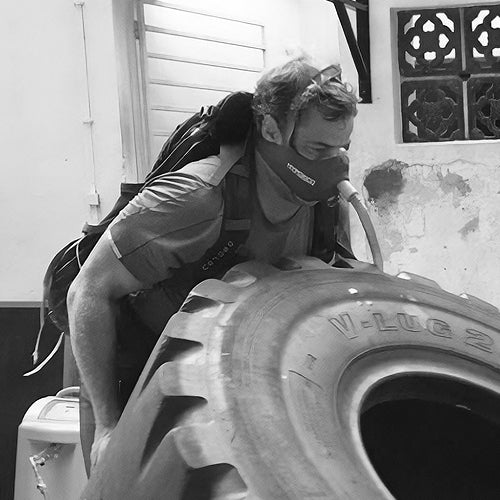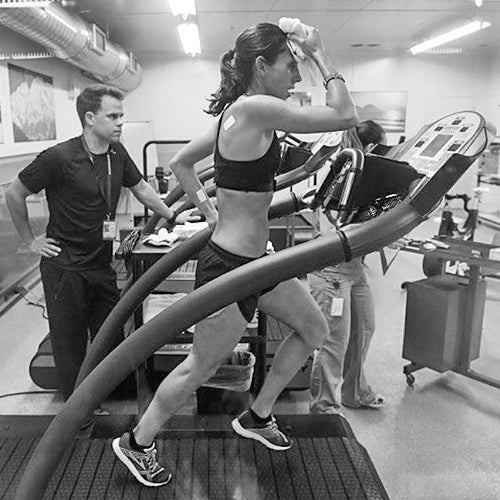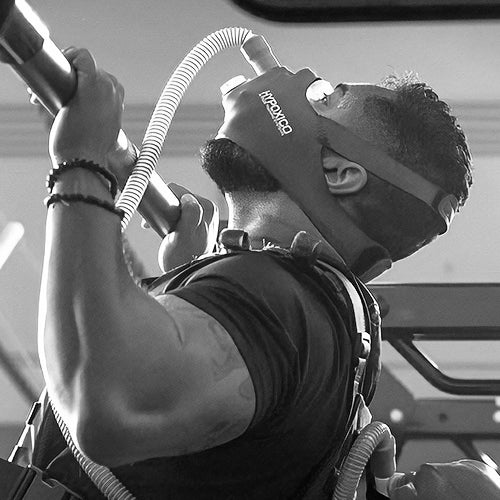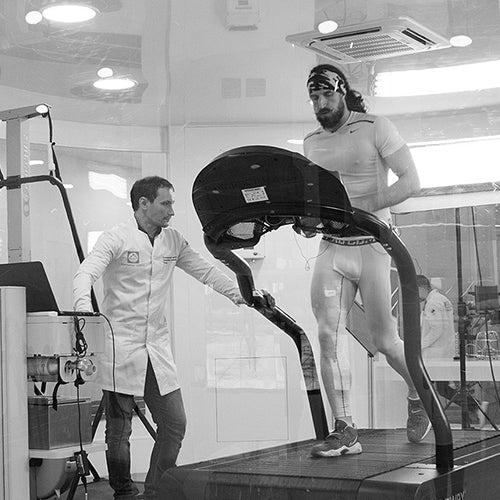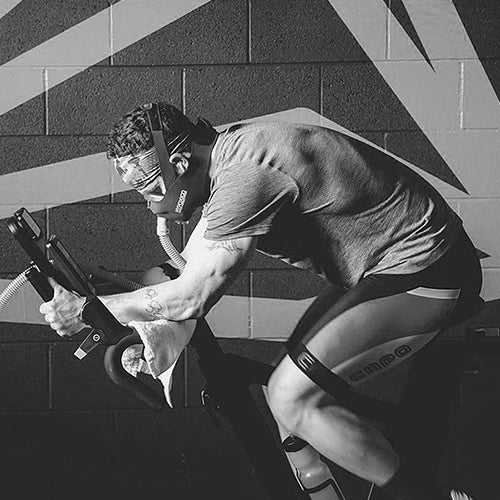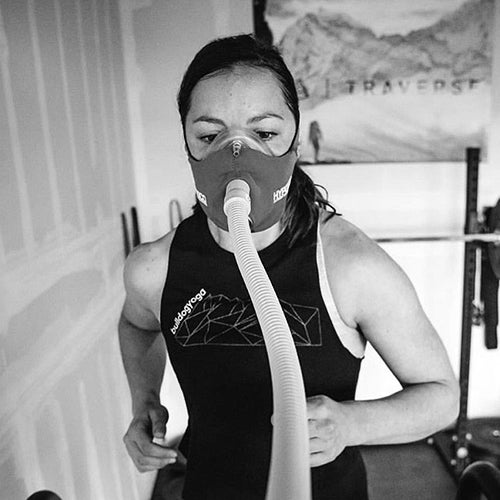Exercising at Altitude
Intermittent Hypoxic Training (IHT)
Also known as hypoxic exercise, this altitude training method involves performing workouts - either aerobic or anaerobic - with reduced oxygen intake.

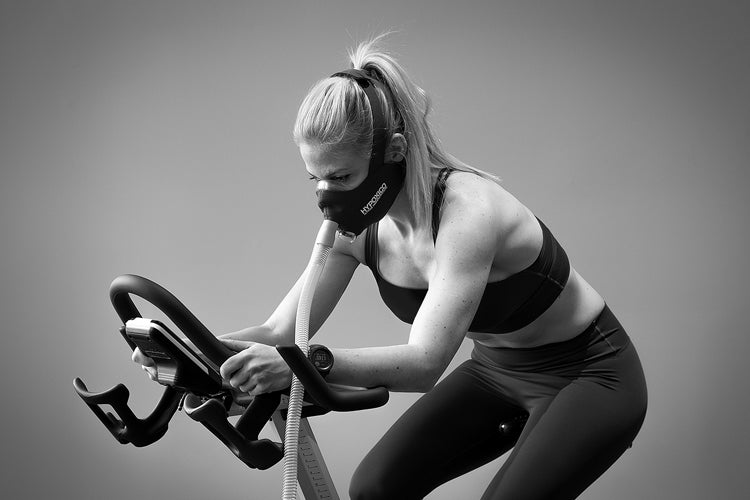
Train High
Exercising at altitude is an intense physiological challenge that forces the body to adapt in ways that lead to increased performance, fitness, and health. It also allows for intensified cardiovascular exercise to be performed with a reduced load on the musculoskeletal system, which is especially useful for maintaining fitness after an injury.
Hypoxic exercise is often performed as part of a Live Low, Train High (LLTH) routine, which simply involves living at low altitude (like most people do) and exercising at altitude as a supplement to normal workouts.
Live High, Train High (LHTH)
Many mountaineers and competitive athletes take their training a step further with a Live High, Train High (LHTH) routine. This involves both sleeping and exercising at altitude (in addition to low altitude) in order to maximize benefits and reach peak performance.
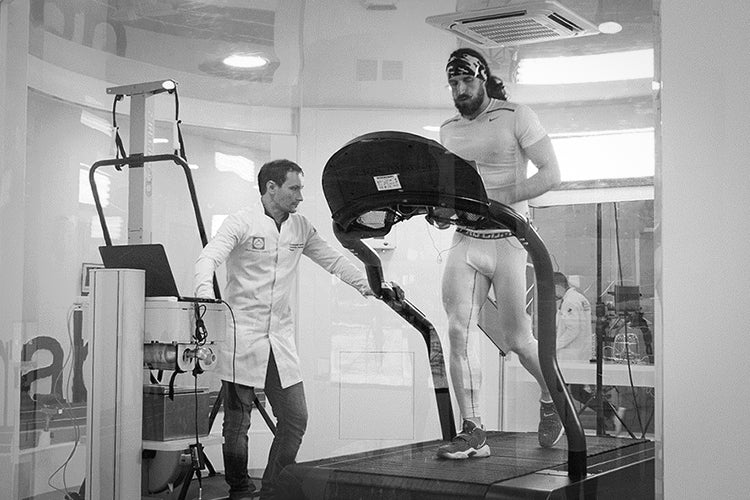
The Benefits
Decades of scientific research have shown the following physiological benefits to occur as a result of exercising at altitude:
- Increased aerobic capacity (VO2 Max) 2-5
- Increased lactate threshold 5, 38
- Increased time until exhaustion 5, 8-11
- Increased strength 18, 20, 21
- Increased power output 1, 7, 8
- Increased mitochondrial density and production 35, 36, 37
Benefits Continued
- Improved repeated sprint speed and distance 12, 13
- Reduced fatigue 9, 10
- Increased growth hormone concentration 10
- Increased muscle thickness, cross sectional area, and lean body mass 16-19
- Improved pH regulation 8, 35, 46
- Improved body composition 47-50
- Reduced body weight and body fat percentage 55, 56
Who & What It's For
Exercising at altitude is beneficial to a wide range of people and applications. The most common include:
Athletes
Hypoxia delivers a unique stimulus that allows individual athletes and sports teams to enhance their training and obtain a performance edge unattainable under normal training conditions.
It also enables injured athletes to maintain fitness by allowing intensified cardiovascular exercise to be performed with a reduced load on the musculoskeletal system.
Mountaineers
For those preparing for an expedition, exercising at altitude is an excellent supplement to sleeping at altitude. Not only does it help physically prepare climbers for the intense exertion they'll experience on the mountain, but it also supports behavioral adaptations conducive to a successful summit.
Crossfit
Hypoxia can enhance the high intensity aerobic and anaerobic exercises associated with Crossfit, leading to increased strength, power, and endurance.
Health & Home Fitness
Altitude training isn't just for professional athletes. Whether the goal is weight loss or simply an increase in overall fitness, hypoxic exercise is a beneficial supplement to any home workout routine. It allows workouts to be performed in reduced time and with less risk of injury, and assists in reducing body weight and body fat percentage.
Rehabilitation
Hypoxia increases the intensity of any physical activity without placing additional load on the bones, muscles, joints, tendons, and ligaments. This makes it ideal for rehab because it reduces fitness loss and allows higher intensity workouts to be performed without aggravating injuries.
How to Exercise at Altitude
Hypoxico's altitude training systems make it convenient for anyone to exercise at altitude, regardless of where they live. It's no longer necessary to physically travel to high altitude in order to obtain the benefits.
-
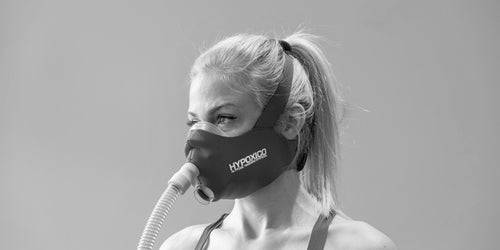
Altitude Mask
The most popular way to exercise at altitude is while wearing an altitude mask connected to an altitude generator. It's highly portable and perfect for treadmills, exercise bikes, and weight lifting.
LEARN MORE -
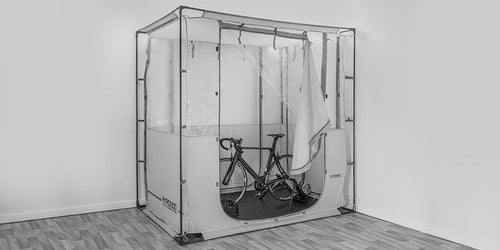
Cubicle Tent
For home user's who don't wish to wear a mask during workouts, exercise equipment can be placed inside a portable cubicle tent, which is then supplied with hypoxic air by an altitude generator.
LEARN MORE -

Altitude Chamber
Users who desire maximum comfort and will be training multiple times or for extended periods can have a custom altitude chamber built from scratch or incorporated into an existing space.
LEARN MORE
Training Guidelines
Like any workout routine, exercising at altitude is highly individualized and entirely dependent on your unique goals and reaction to hypoxia, but the following guidelines are useful for getting started:
1 Choosing a Goal
While it does produce unique benefits, hypoxic exercise is most simply viewed as a way to enhance the benefits already associated with a specific workout. So for example, if you wanted to increase VO2 max, you would perform interval workouts at altitude.
2 Simulated Altitude
An altitude between 9,000 and 12,000 feet is the optimal range for most people and types of workouts. It's also generally best to start out at the lower end of the scale while becoming accustomed to the new stimulus.
3 Session Length
Sessions are generally best kept between 30-60 minutes. This gives enough time to receive a substantial hypoxic stimulus without becoming overly exhausted. It also allows time to perform other workouts on that day.
4 Blood Oxygen Saturation (SpO2)
A fingertip pulse oximeter should be worn during each session and SpO2 kept within the 80%-85% range. This is not a hard and fast rule, but it is a good indicator of an optimal level of stimulus.
5 Rating of Perceived Exertion (RPE)
Hypoxia will automatically increase RPE during any exercise, and the optimal range during a session should be tied to the goal. For example, during sprint training, RPE should be high, while during strength training it should be medium.
6 Session Frequency
2-3 sessions per week is sufficient to gain the desired benefits and not interrupt other training. However, those recovering from an injury or training for acclimatization can perform more frequent sessions.
FAQs
What is the maximum altitude I can exercise at?
You could attempt to exercise as high as your Hypoxico system allows, but it likely won't do you much good. After a certain point your body will be too oxygen deprived and exhausted to gain any additional benefits. This is why we recommend that most users cap out at 12,000 feet, and simply increase workout intensity if they need a bigger challenge. Mountaineers are of course the exception to this, and they often choose to exercise higher to simulate the conditions they'll experience on the mountain.
How do I encorporate hypoxic exercise into my existing routine?
It's generally best to fit in 2-3 altitude training sessions per week either on top of your existing routine, or as a replacement to a specific workout on those days. The most important thing is to maintain a consistent schedule so your body understands that it needs to adapt to this new challenge.
How do I combine altitude training methods?
Combination altitude training is quite common, and the most important thing is to ensure that you don't overdo it or completely replace low altitude training. In order to not overwhelm the body with too much all at once, it's best to introduce each new altitude training method a week or two after starting the previous one.
How is exercising at altitude different than wearing those masks I see at the gym?
The portable training masks you see at the gym simply create air resistance to make it more difficult to breath. They do not deliver oxygen-reduced air and therefore cannot produce the same results as altitude training.
Questions?
If you have any questions regarding altitude training and our systems, please don't hesitate to reach out and speak with one of our experts:
